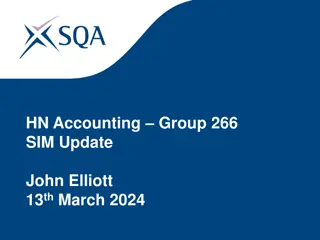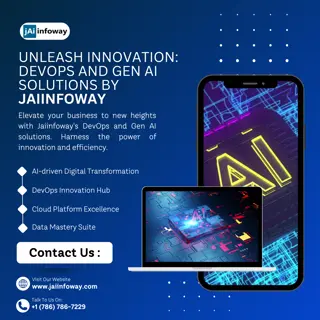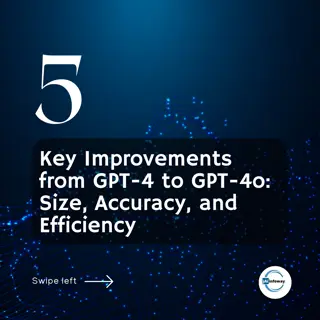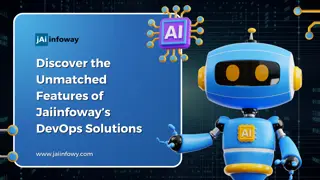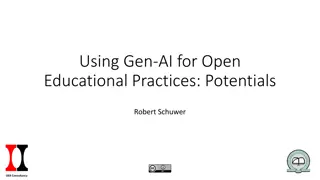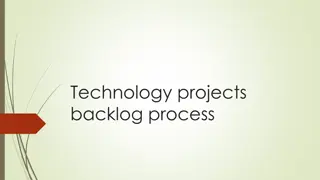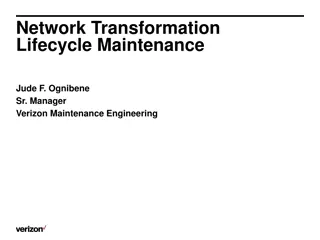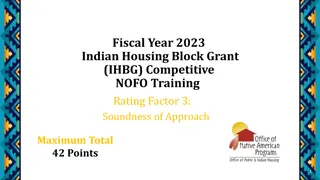Managing Next-Gen Development Projects
Projects in next-gen development demand meticulous planning and diligent processes. Explore capacity analysis, resource utilization, risk management, milestone tracking, and more to enhance project management. Examining the available data can lead to crucial insights, refining project timelines and resource allocations for optimal outcomes.
Download Presentation

Please find below an Image/Link to download the presentation.
The content on the website is provided AS IS for your information and personal use only. It may not be sold, licensed, or shared on other websites without obtaining consent from the author.If you encounter any issues during the download, it is possible that the publisher has removed the file from their server.
You are allowed to download the files provided on this website for personal or commercial use, subject to the condition that they are used lawfully. All files are the property of their respective owners.
The content on the website is provided AS IS for your information and personal use only. It may not be sold, licensed, or shared on other websites without obtaining consent from the author.
E N D
Presentation Transcript
Next-gen Dev. Planning Projects continue to get more complex. A schedule alone won t manage it. Process needs to encourage diligence and meticulousness. Plans need to tease out data. Project Managers need to be interested in doing things better.
Development Plan Development Plan Capacity/ Resource Utilization Plan Capacity Plan Risks List Milestone Deliverables Engineering Schedule Design Schedule? Asset Production Schedule Asset Lists Art Schedule More than just a schedule!
Development Plan Capacity analysis Resource utilization plan Feature analysis Risks list Milestone deliverables Asset production list Schedules various types I will focus on a subset of this today.
Capacity Analysis Capacity plan. Development capacity estimation. Development staff budget.
Capacity Plan # of workers or machine * # of shifts * utilization * efficient. or the volume of availability a team has to undertake work in any given period of time. Simply a measurement of how much time you have. Don t let other people tell you otherwise Not a schedule. Not a list of tasks either. A great 1st stage of project planning. Establishes many initial data points. Feeds data into other parts of the plan.
Capacity Plan vs Man Months Man-Month charts do a similar thing. Typically they don t consider phases. Man-month mindset is worth getting away from anyway. Schedule for the time people have, not what they don t. Rarely used for anything other than budget. Very disappointing to miss other opportunities.
Capacity Plan First data becomes available Allows first analysis Shocking realizations 2 year project is really a 1.3 man year project. 4 month post-production is 89 days. Motivation for doing this is becoming apparent. Keeping it real! EA Spouse won t blog about you!
Development Capacity Capacity is made up of: Productive time Non-productive time Unfortunately, actual capacity != capacity Common mistake Goal: Task accurately to within available time ONLY.
Capacity Analysis Capacity and Development Capacity are now understood in full. Time spent by phase and discipline is known. Cost of these capacities can now be calculated. Development staff costs. Phase cost. Cost to get to Vertical Slice. Cost of engineering. Cost of engineers in pre-production. etc
Capacity Analysis 1st useful charting opportunities available. Some are useful right now. Some of them useful for collection and comparison with future projects. Post-mortem. Excellent for peer and executive review.
Reality Check Yes, project is an example but it s realistic. It s also a small team. Gulp. Remember: 20% off engineers, not artists. Large overhead of non-productive time. Ouch! A decent proportion of the budget is spent on project management.
Project Managers beware! A proportion of the budget doesn t go to game features. Publishers and Developers need to pay more attention to this! Given the cost (or funding) of project management Publishers should expect better planning. Employers should expect more from planners. Teams should be serviced by the best PM s. Is this a fair deal?
Capacity Analysis - done Now complete. Next Begin feature planning. Ultimately move onto task planning. Does your process support this? Most (if not all) of this is pre-production. Also requires team buy in.
Feature Planning #1 Opportunity to categorize work. Assess it by risk and value. 1st opportunity to cut scope. Don t waste time and money on lofty goals. But beware of cutting features prior to full assessment. Based on Game pillars. Game features. Risk vs value (of feature or pillar).
Pillar Analysis (Value vs Risk) No pillar should be low in value. Project X: Pillar Value vs Risk 100% 90% Avoid left side of chart. 80% Pillars will have risk. 70% 60% Topmost pillars may need related work to be less risky. P1 P2 Risk 50% P3 P4 P5 40% 30% 20% 10% 0% 0% 20% 40% 60% 80% 100% Value
Feature Analysis (Value vs Risk) Project X: Feature Value vs Risk 100% 90% 80% Mini-games F2 F3 F4 F5 F6 F7 F8 F9 F10 70% 60% Risk 50% 40% 30% 20% 10% 0% 0% 20% 40% 60% 80% 100% Value
Engineering Worksheet The place where tasks are entered. Engineering in this case. Task durations are summed for future comparison to capacity. Tasks are budgeted to Pillar, Feature and Phase. Quality of estimations are tracked.
Worksheet Goals By end of pre-production. Complete Largely based on quality estimates. Transferable to schedule. Complete is not necessarily final. Include agreed iteration and contingencies. My tip: Actually complete things at milestones. What about Agile methodologies?
Task Lifecycle & Quality Task entry begins early (ASAP) Doesn t matter if estimates begin as high level . Pre-production goal is to iterate on detail of tasks. Quality of estimations is progressive. Track how well your tasks are estimated. This can be used to drive pre-production planning. Provide a snapshot of task list quality. Should be very well estimate by end of pre-production. See Button Mash Mini-game example.
Estimation Quality Project X: Estimate Quality BO, 260, 8% HLE, 520, 15% Final, 1892, 54% HLFE, 786, 23%
Worksheet Analysis Already covered Estimation Quality. Tasks are budgeted to Pillar, Feature and Phase. Excellent opportunity for analysis through even more funky charts. Great scope management tools. Using these analysis opportunities are the key towards Better than a Schedule planning.
Feature Analysis #2 Project X: Feature Effort vs Value Production 100% 90% 80% Mini-games F2 F3 F4 F5 F6 F7 F8 F9 F10 70% 60% Value 50% 40% 30% 20% 10% 0% 0 200 400 600 800 1000 Effort
Feature Analysis #2 Project X: Feature Effort vs Risk Production 120% 100% Mini-games F2 F3 F4 F5 F6 F7 F8 F9 F10 80% Risk 60% 40% 20% 0% 0 200 400 600 800 1000 Effort
Other Charts Art & Design. Not presented to save time. Similar to engineering. No design for me though. 20% art contingency. Remember tasking the engineers to 80%. Alternative is to insert a 20% of capacity size task in worksheet. Would see large chunk in art overhead on stacked chart. You also need combined charts. Need to look at Art + Engineering + Design too.
Scope Management Use combinations of charts to review situation. Constant and iterative process. Use the worksheets and charts to scope tasks to the established development capacity. Present your case to team and stakeholders. Great tools for consensus on features by end of pre- production. Project is in control from an early stage. Features and schedule are under control. Quality time is maximized. Crunch is minimized.
Change Management Tasks get progressively more detailed throughout pre-production anyway. Reality: Features are sometimes added/changed beyond that. Easy to digest new data. Add new work with ease. Switch tasks in/out. Work with team and stakeholders. Accommodate changes. Suggest alternatives. Easy consensus.
Better than a Schedule? Planned, not just tracked . Planned with diligence. Detailed. Meticulous. Project Manager vision is established.
Wrap Process is important too Scope of discussion to small for me to present this. More details? Slides and bonus material @ www.jezsherlock.com Questions?





